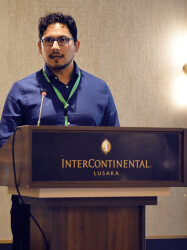BibTex format
@article{Perez-Guzman:2018:10.1371/currents.outbreaks.7a6c64436a3085ebba37e5329ba169e6,
author = {Perez-Guzman, PN and Carlos, Junior Alcantara L and Obolski, U and de, Lima MM and Ashley, EA and Smithuis, F and Horby, P and Maude, RJ and Lin, Z and Kyaw, AMM and Lourenço, J},
doi = {10.1371/currents.outbreaks.7a6c64436a3085ebba37e5329ba169e6},
journal = {PLoS Currents: Tree of Life},
pages = {1--15},
title = {Measuring mosquito-borne viral suitability in Myanmar and implications for local Zika virus transmission},
url = {http://dx.doi.org/10.1371/currents.outbreaks.7a6c64436a3085ebba37e5329ba169e6},
volume = {10},
year = {2018}
}

